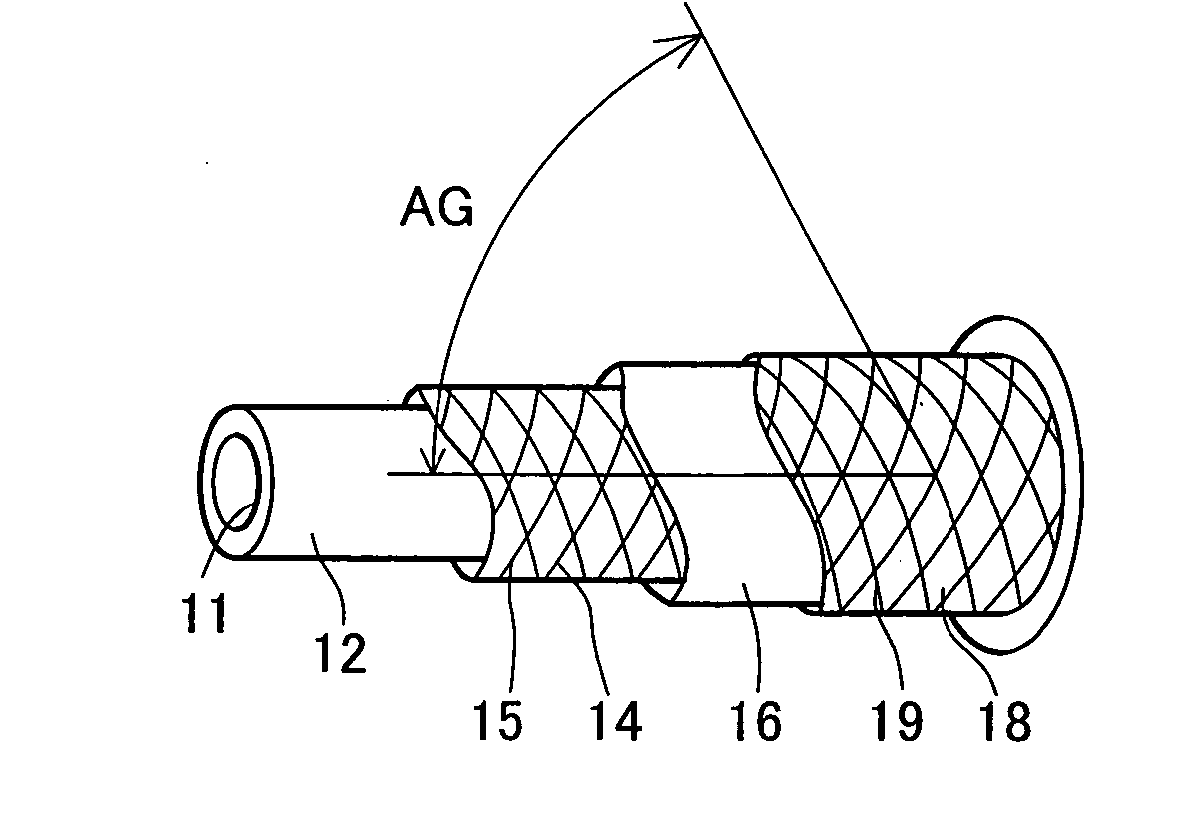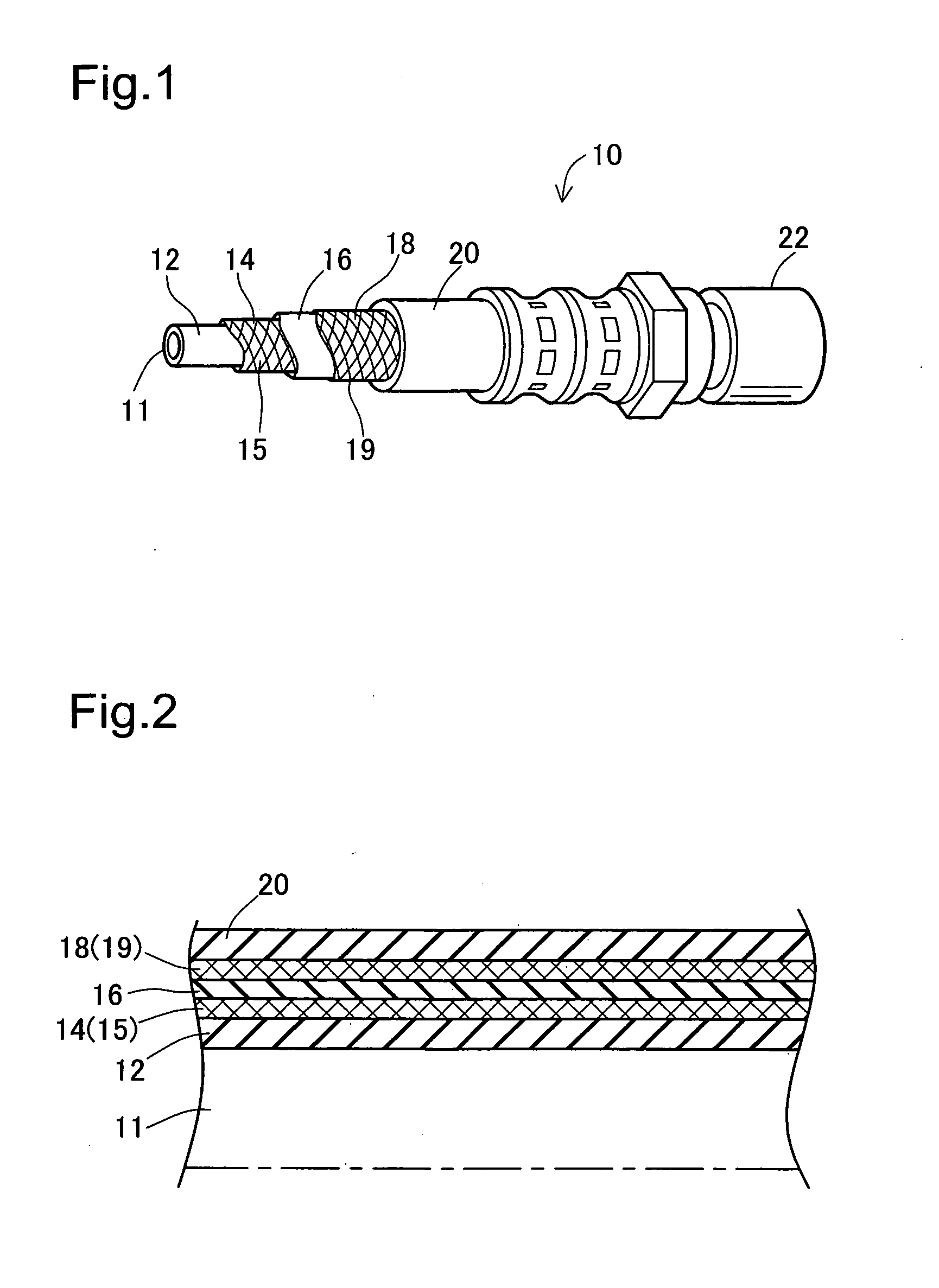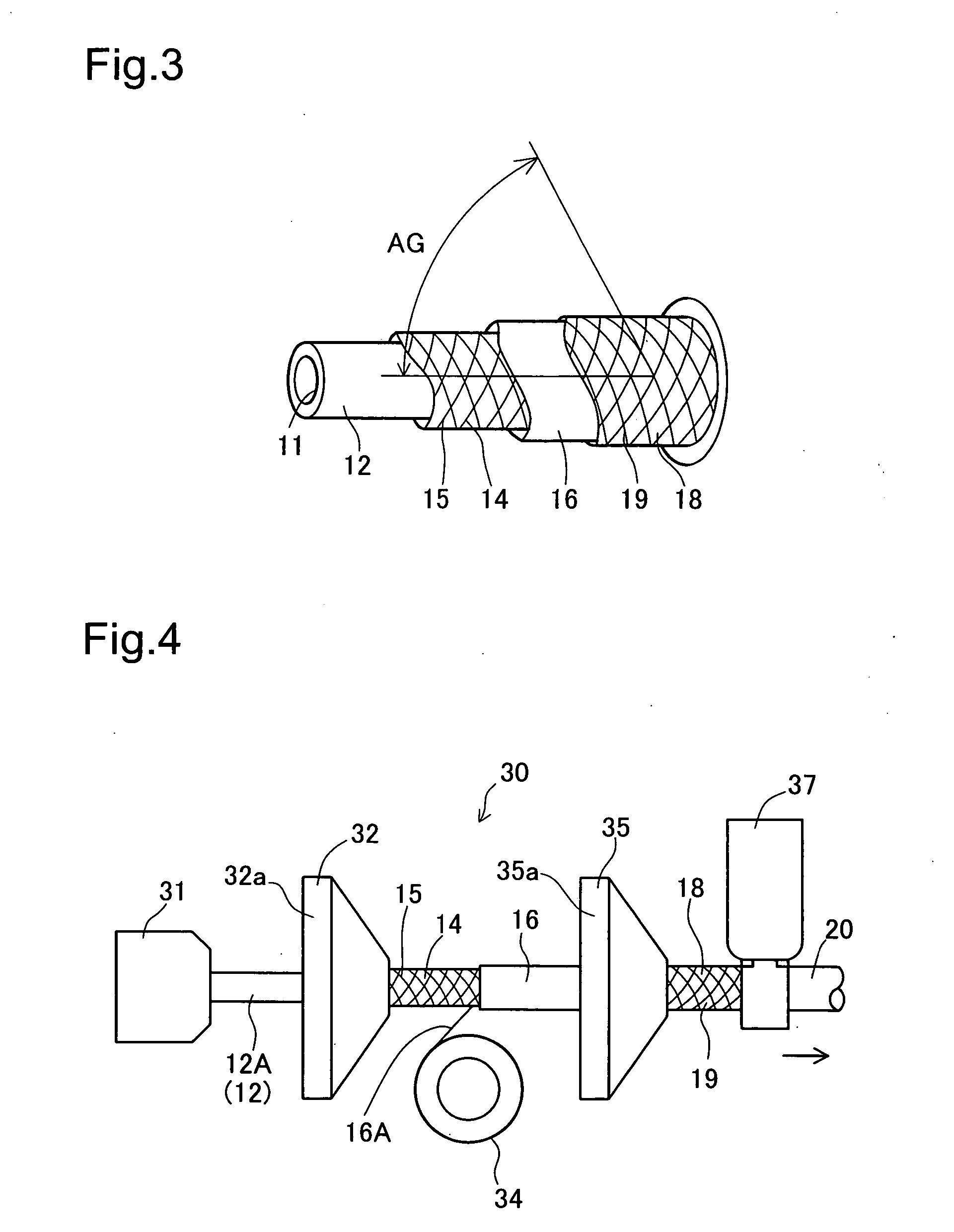Brake hose
a technology of brake hoses and hoses, which is applied in the direction of flexible pipes, tubular articles, thin material handling, etc., can solve the problems of vapor lock and compromising the pedal feel, and the control of the thickness of the inner tube rubber layer is complicated, so as to achieve high water retention of the material, low volume expansion, and high durability
- Summary
- Abstract
- Description
- Claims
- Application Information
AI Technical Summary
Benefits of technology
Problems solved by technology
Method used
Image
Examples
Embodiment Construction
[0023] (1) Schematic Structure of Brake Hose 10
[0024]FIG. 1 is an oblique partial cutaway view of the brake hose 10 in an embodiment of the invention, and FIG. 2 is a half-cross section of the brake hose 10. The brake hose 10 in FIGS. 1 and 2 is used to connect a hydraulic system on the tire side with the master cylinder used in automobile hydraulic brakes (not shown), and is laminated in five layers to withstand the brake fluid pressure. That is, the brake hose 10 has an inner tube rubber layer 12 with a flow path 11, a lower yarn layer 14, an intermediate rubber layer 16, an upper yarn layer 18, and a cover rubber layer 20. The brake hose 10 is joined at the end by tightening a cap 22.
[0025] (2) Structure of Layers in Brake Hose 10
[0026] The materials, thickness, and the like of the layers of the brake hose 10 have been established in order to provide properties such as pressure resistance, durability, expansion resistance, and water penetration resistance to allow the hose to wi...
PUM
 Login to View More
Login to View More Abstract
Description
Claims
Application Information
 Login to View More
Login to View More - R&D
- Intellectual Property
- Life Sciences
- Materials
- Tech Scout
- Unparalleled Data Quality
- Higher Quality Content
- 60% Fewer Hallucinations
Browse by: Latest US Patents, China's latest patents, Technical Efficacy Thesaurus, Application Domain, Technology Topic, Popular Technical Reports.
© 2025 PatSnap. All rights reserved.Legal|Privacy policy|Modern Slavery Act Transparency Statement|Sitemap|About US| Contact US: help@patsnap.com



